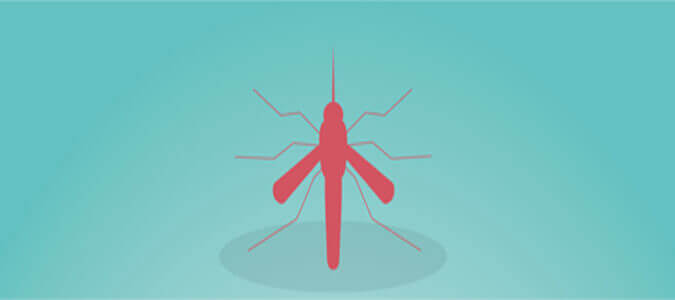Update: On May 26, 2015 the Center for Disease Control put Brazil on a Warning Level 1: (Practice Usual Precautions) for Dengue. The Pan American Health Organization reported 745,957 cases of Dengue, with 229 deaths. To see recent updates: http://wwwnc.cdc.gov/travel/notices
Facts:
- Approximately 2.5 billion people, or 40% of the world’s population are living in areas where there is a risk of infection.
- Dengue Virus is a leading cause of illness and death in the tropics and subtropics.
- As many as 50 to 100 million people are infected annually. About 500,000 of those cases become Dengue Hemorrhagic Fever (DHF), which cause about 22,000 deaths, mostly among children.
- Dengue Fever is caused by any one of four related viruses that are transmitted by mosquitos.
- Dengue Fever has been a worldwide problem since the 1950’s.
- Dengue rarely is seen in the continental United States, but is very common among popular tourist destinations like Latin American, Southeast Asian & Pacific Island countries. Dengue is endemic to Mexico.
- Puerto Rico has had a long struggle with controlling Dengue. Island-wide epidemics have occurred. The most recent epidemic in Puerto Rico was in 2007.
- The life-cycle of an adult mosquito is about 8-10 days. Mosquito eggs can survive several months on a surface.
- There are no vaccines to prevent the infection of Dengue Fever. There are also no specific medications that can treat Dengue Fever.
Prevention:
- The best form of prevention is to simply avoid being bitten by mosquitos, especially if living in or traveling to endemic areas.
How can you reduce the chance that you will be bitten?
- Eliminate places where mosquitos lay their eggs, such as artificial containers that hold water (plastic bowls, buckets, 55-gallon drums, used tires), inside and outside of the home.
- Clean containers that do need to hold water, like pet water bowls or flower planters, vases, or dishes at least once per week. Make sure to cover water storage barrels.
- Use bug/mosquito repellant, indoors and out, day and night. The product should contain at least 20-30% DEET as the active ingredient. Other good ingredients include picaridine, IR3585, oil of lemon eucalyptus and para-menthane-diol. Use all products as instructed on their labels.
- Consider using permethrin-treated clothing and gear. You can find permethrin-treated boots, pants, socks and tents. Treated clothing can still be effective after multiple washes. See the product information to determine how long the protection will last. DO NOT use permethrin directly on skin.
- If possible, wear long sleeves and pants, indoors and out, day and night.
- Be sure all window and door screen are secure and without holes. Use air conditioning when possible.
- If possible, sleep under a bed net, under covers, or with a fan constantly blowing directly on you.
- Kill mosquitos as you see them!
- Tip: If you are using sunscreen, apply the sunscreen first and the insect repellant second.
- Important: If someone in your house has Dengue Fever, take special precautions to prevent mosquitos from biting them and then biting others in the house.

Transmission:
Dengue is transmitted to people who have been bit by a mosquito that is infected with the Dengue virus. Mosquitos initially contract the Dengue virus by biting a person that is already infected with Dengue. Sometimes a person can have the Dengue virus in their blood and never show any symptoms. About one week after the mosquito becomes infected it can pass the virus on to other people.
Note: In very rare cases, Dengue Fever can be transmitted through organ transplants or blood transfusions by an infected person. There has also been evidence of an infected mother transmitting the virus to her fetus.
Symptoms:
The principal symptoms of Dengue Fever include:
High Fever and at least two of the following;
- Severe Headache
- Severe Eye Pain (Behind the Eyes)
- Joint Pain, Muscle and/or Bone Pain
- Rash
- Mild Bleeding (from the nose and gums especially)
- Petechia (small red or purple spot(s) caused by bleeding into the skin)
- Easy Bruising
- Low White Cell Count
NOTE: Symptoms of Dengue Fever usually begin to appear 4-7 days after being bitten by an infected mosquito.
Warning Signs:
Watch for these warning signs after fever begins to go down, about 3 to 7 days after first symptoms arose. Go IMMEDIATELY to the closest medical facility if any of the following warning signs emerge;
- Severe abdominal pain or persistent vomiting
- Red spots or patches on the skin
- More extreme bleeding from nose or gums
- Black, tarry stool
- Drowsiness or Irritability
- Pale, Cold or Clammy Skin
- Difficulty breathing
Timeline:
- Dengue begins with a high fever that lasts 2-7 days. During this time, one or more of the other initial symptoms may appear.
- After the initial 7 days, as the fever begins to decline, warning signs may develop.
- The onset of any of the warning signs marks the critical 24-48 hour period when the capillaries in the body become very permeable, allowing the fluid inside to leak into the peritoneum (membrane that forms the lining of the abdominal cavity) and pleural cavity (visceral membrane surrounding the lungs).
- At this point “Dengue Fever” has turned into “Dengue Hemorrhagic Fever (DHF)”.
- If left untreated, this can lead to failure of the circulatory system, shock, and possible death.
- Patient may also suffer from skin hemorrhages and internal bleeding.
Note: Generally young children and those infected by Dengue for the first time experience a milder illness than older children and adults.
Treatment:
There is no specific medication to treat Dengue, but persons who think they are infected can;
- Use analgesics (pain relievers) with acetaminophen
- Drink plenty of fluids to avoid dehydration
- Get plenty of rest
NOTE: Avoid using drugs with acetaminophen, Naproxen and aspirin.
Treatment for Dengue Hemorrhagic Fever;
- Consult with a physician and/or seek immediate hospitalization so the Fever can be better supervised.
- Treatment by fluid replacement therapy may be advised.
Note: With rapid and correct medical management mortality due to Dengue Hemorrhagic Fever can be less than 1%.
History:
The four Dengue viruses originated in monkeys and were transferred to humans in Africa or Southeast Asian sometime between 800 and 100 years ago. For many centuries it remained a very minor illness. During WWII infected mosquitos were spread across the world in cargo containers. In the 1950’s the Philippines and Thailand saw the world’s first Dengue epidemics. Around 1981 large amounts of cases of Dengue began to be documented in Latin America & the Caribbean.
How to spot a “Dengue Mosquito”:
There are 2 main mosquito vectors of Dengue Fever; The Yellow Fever Mosquito & the Asian Tiger Mosquito. Both types of mosquitos can be found in Mexico. Dengue is endemic everywhere in Mexico, except Baja California Norte, and places at a high elevation, like Mexico City.







